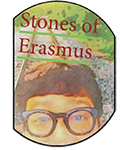$7
Blake's The Chimney Sweeper Poems | Romanticism & The Industrial Revolution for Grades 9-11
I love using literature to teach history. Use my "Visualizing the Industrial Revolution Through Poetry" using William Blake's two chimney sweeper poems from his Songs of Innocence and Experience. The lesson plan (with handouts) will enrich your teaching and introduce students to this important era of history and an important British Romantic poet.
The resource contains the following:
- 1 Notes for the Teacher
- 5-Question Pre-Assessment on William Blake and Romanticism (on Easel)
- 1 Lesson Calendar and Pacing Guide (90 Minutes)
- Learning objectives, teacher tips, lesson sequence, and more.
- Success Criteria Anchor Chart
- 2 "Look Closely" Posters
- London in Blake's Time (with historic map)
- Facsimile of Blake's original poem from the Songs of Innocence (illustrated)
- The 1789 text of “The Chimney Sweeper” By William Blake
- Also includes guided notes
- The 1794 text of “The Chimney Sweeper” By William Blake
- Also includes guided notes
- 19 Question Bank Quick Review
- Use it as a quick review. Or, create your own short quiz.
- 8 Discussion and Creative Tasks for Speaking and Listening
- Useful activities for both independent practice and group work.
- 1 Google Form Summative Assessment
- Includes True/False, Multiple Choice, Matching Set, and Written Response
- 1 Writing Prompt with Lined Paper
- 4-point Grading Rubric
- 3-Box Note-Taking Template
- Maintain student accountability. Have students take notes using a Cornell note-taking style template
- 2 Half-Sheet Exit Slips
- Easily use as a formative assessment at the end of the lesson.
- 1 Frayer Model Template
- 1 Hyper-Linked List of Further Reading about William Blake and "The Chimney Sweeper"
- Answer Key for All Student-Facing Questions
- Standards Alignment Chart for planning
William Blake wrote the first chimney sweeper poem in 1789 as part of his book The Songs of Innocence. He followed up in 1794 with the second volume of poetry. In that year, he combined both volumes as The Songs of Innocence and Experience. Blake was a visionary and a poetic rebel. In both poems, he lays bare the corruption of the city and exposes the exploitation of child labor.
Note: This lesson follows the standards for teaching hard topics found on the Learning for Justice website.
Possible Uses Across the Curriculum:
- Teach Social Justice with William Blake
- High School or Middle School Humanities or Language Arts Class
- A Social Studies / History Unit on the Industrial Revolution
- A Literature / Language Arts Unit on Romanticism
- A Poetry Unit on British Poets from the 18th and 19th Centuries
- A Current Events / Social Studies Unit on Child Labor Laws
- An Ethics Unit on Hypocrisy
Duration of Lesson: Two class periods of 45 minutes each (Or one class period of 90 minutes)
Materials: Smartboard (optional); handouts, teacher notes, pencil, pen, paper, document camera (for guide notes).
Discover More Resources from Stones of Erasmus:
- Pair this lesson with the "London" Lesson Plan & Activity
- Check out my Philosophy in the Classroom</a> series for some gnarly lessons to introduce your pupils to philosophical thinking!
© 2023-2025 stonesoferasmus.com
